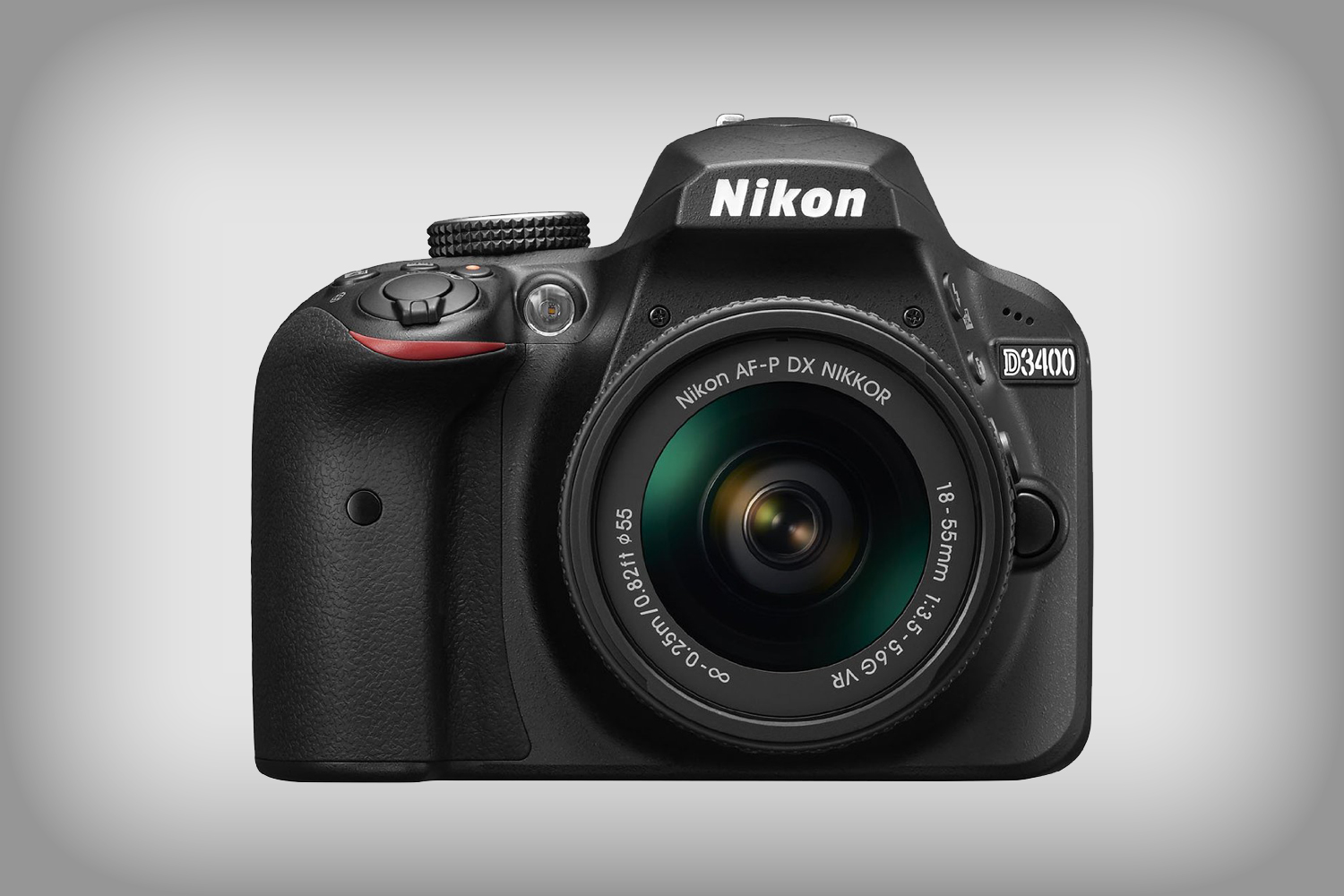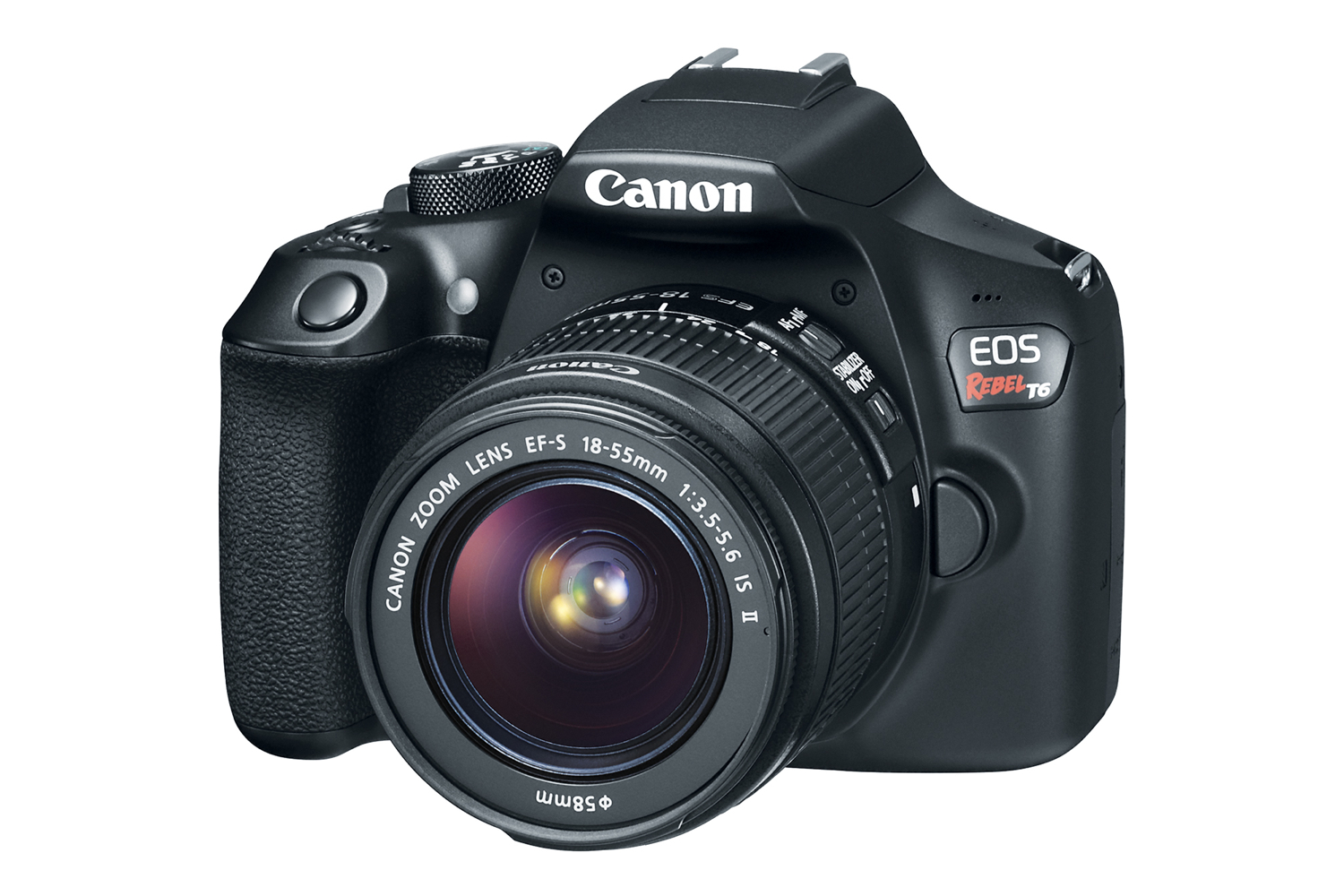Entry-level DSLRs often offer the best photos at the sub-$500 price point. The sensors are larger, they shoot in RAW, the battery life is excellent, and the ability to swap lenses offers versatility and expansion into the future. But the Nikon D3400 and Canon EOS Rebel T6 stand neck-and-neck at identical price points. So which one is better? Who comes out on top in a match of the Nikon D3400 vs. Canon T6?
These are two of the best DSLR deals currently available, so let’s see which one offers better features for the price.
| Nikon D3400 | Canon Rebel T6 | |
| Sensor | 24.2-megapixel APS-C sensor | 18-megapixel APS-C sensor |
| Burst Speed | 5 fps | 3 fps |
| Shutter Speed | 30 sec. to 1/4000, flash sync 1/200 | 30 sec. to 1/4000, bulb, flash sync 1/200 |
| ISO | 100 – 25,600 | 100 – 6,400 |
| Autofocus | 11-point TTL phase detection autofocus | 9-point TTL phase detection autofocus |
| Image Stabilization | Included in kit lens | Included in kit lens |
| Video | 1080p HD video at 60 fps for up to 20 minutes | 1080p HD video at 30 fps |
| Viewfinder | Optical, 95 percent coverage | Optical, 95 percent coverage |
| LCD | 3-inch | 3-inch |
| Connectivity | Bluetooth | Wi-Fi with NFC |
| Battery | Li-ion rated at 1,200 | Li-ion rated at 500 shots |
| Dimensions (WxHxD) | 4.9 x 3.9 x 3.0 inches | 5.8 x 3.99 x 3.06 inches |
| Weight | 14 ounces | 17.1 ounces |
| Kit Lens | Nikon AF-P DX Nikkor 18-55mm f/3.5-5.6 VR | Canon EF-S 18-55mm f/3.5-5.6 IS II |
| Price | $450 | $450 |
| Read more | Nikon D3400 News | Canon T6 Review |
| Buy Now |
Sensor
Both entry-level DSLRs have an APS-C sensor, which is much larger than you typically find in a smartphone or the typical point-and-shoot. That larger sensor allows for better low light shots and pleasantly out-of-focus backgrounds. If you’re looking to step up from a smartphone camera, both entry-level options will do that and more.
The sensors aren’t identical though — the Nikon D3400 has a few more megapixels, which means photo sizes are a bit larger and images are a bit more detailed.
Winner: Nikon D3400
Speed
Entry-level DSLRs tend to be on the slow side — they’re sufficient for capturing a kids’ t-ball game but don’t come near the performance of professional sports cameras. A camera’s burst speed indicates how many images it can capture in a second. The higher that number, the faster the camera is.
The Nikon D3400 edges out the Rebel T6 here again with a 5-frames-per-second burst speed compared to the Canon’s 3 fps. That means if you’re shooting action with the burst mode on, the Nikon will give you two more images to choose from for each second of burst.
Winner: Nikon D3400
Autofocus
More autofocus points mean better autofocus accuracy, along with more flexibility to position the active focus point manually. Nikon has a slight edge here again with 11 points to the Canon’s nine. Autofocus performance isn’t all about the number of points, but the D3400’s tech specs list a slightly wider range of acceptable light sensitivity for the autofocus to perform in.
Winner: Nikon D3400
Video
Just a few years ago, Canon was the preferred DSLR brand for video. That still may hold true for some models, but once again, the D3400’s tech just edges past the Rebel’s. The Nikon D3400 shoots HD video at up to 60 fps, which is twice the 30 fps frame rate of the T6. Faster frame rates create smoother action in video, although 30 fps is the standard frame rate for most video content.
Winner: Nikon D3400
Design
Design-wise, both the Nikon D3400 and the Canon T6 are very similar in their basic design. As budget models, neither one includes a touchscreen or a tilting screen and the control scheme is more minimal than the higher-end options, which also helps ease the transition from a smaller camera. Entry level DSLRs are smaller than professional ones, though the D3400 is slightly smaller and a bit lighter than the Canon, though not in a really dramatic way.
Winner: Nikon D3400, by a hair
Connectivity
Adding Wi-Fi and Bluetooth allows you to transfer images from the DSLR to a smartphone so you can share them quickly, even when you’re not around a computer. The Canon has Wi-Fi and NFC, but the Nikon only has the newer Bluetooth. So which is better? The D3400’s Bluetooth allows for automatic image transfer and cloud backup via Nikon’s SnapBridge app, but since Bluetooth is low-powered, those files are saved at a smaller resolution. To transfer full resolution files, you need Wi-Fi, which the D3400 lacks. Bluetooth may have that always-on convenience, but if you want to share full resolution files on the go, the D3400 can’t do it — the Rebel T6 can.
Winner: Canon Rebel T6
Battery
DSLRs use a rechargeable battery — the question is how long it lasts. The Nikon D3400 has an excellent 1,200-shot battery life. The Canon T6’s battery life is 500 shots, which is still enough for a full day of shooting, but pales in comparison to the D3400’s.
Winner: Nikon D3400
Picking an overall winner
Canon added few upgrades to the T6, focusing mainly on Wi-Fi connectivity. That limited upgrade allows the Nikon D3400 to beat the T6 in almost every category, with a higher resolution sensor, more speed, a smaller body, and better battery life. That makes the Nikon D3400 an easy choice for beginners at the sub-$500 price point.
Of course, there’s more to the decision than a simple comparison of the specs. Once you buy into a camera system, it’s harder to switch brands, since you’ve already invested in lenses and flashes for the other brand. While the Nikon is the better beginners camera, the Canon is still a solid, although not best-in-class, option. The higher-end Canon Rebel T6i is actually a better comparison to the Nikon D3400, offering a similar sensor and shooting speed, but lists for about $600 — it’s a good option if the T6 features don’t look robust enough yet you wanted to pick up a Canon.
So, after seeing the Nikon D3400 beat out the Canon T6 in almost every category, you should go out and buy the Nikon D3400, right? Not so fast. The D3400 has since been replaced with the Nikon D3500. If you find the D3400 for a steal, go for it — but right now, the newer D3500 is only $50 more. That $50 gets you a newer sensor and processor that doesn’t change the speed and resolution but enhances color and reduces noise levels. The D3500 body is also lighter and has an even longer 1,550 shot battery life. If you absolutely can’t go any higher, or sales push the D3400 down in price, go for it — but compare the prices of the D3400 and D3500 carefully before you buy.







